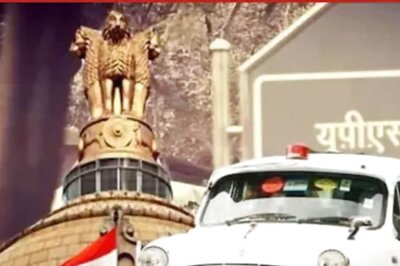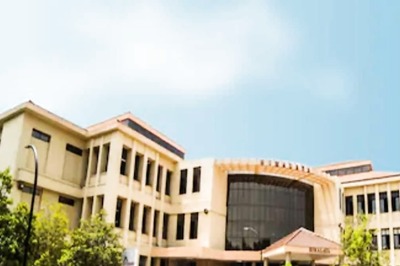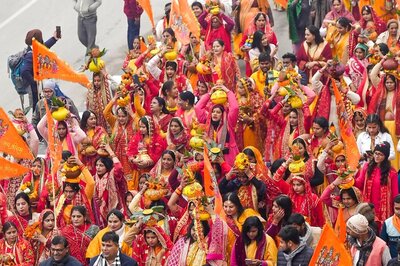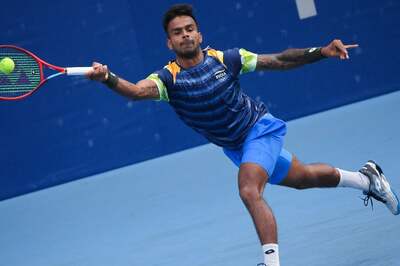
views
In this vein, as the travelling cricket juggernaut reached its finale with India's win in Indore in the seventh one-dayer, thoughts harkened to the city. A comic digression can't be resisted here: Readers may recall that in 1997, an India vs Sri Lanka encounter on Christmas day in Indore was aborted due to the alleged "diabolical nature" of the pitch. Among the voluble malcontents that day in the crowd was yours truly. Tickets from that game are still carefully preserved by my father in the hope that one day they might become collector's items!
Indore provides an interesting vantage point to gauge the discernible changes in Indian society as a consequence of abandoning the stupor of the licence permit era. More than the metropolitan world, it is now in towns such as Indore that the fruits of India's economic juvenescence are becoming visibly felt. Let's put this into context. For the metropolitan residents of Malabar Hills in Mumbai or the tree-lined boulevards of Golf Links in Delhi, liberalisation has meant that a way of life has merely continued albeit with more convenience. However, it is in the smaller towns amid the dusty plains where a compelling metamorphosis is afoot.
In the early 1990's, Indore appeared to be static. There was a palpable feeling that things of any impact happened elsewhere. The city enjoyed the self-conferred sobriquet of "mini-Mumbai" but this was steeped more in hope than reality. When my cousins visited over the summer break from their respective metropolitan climes, they would fulminate at the lack of suitable distractions that the city could offer. Beckett's existential commentary in Waiting for Godot was an apt enough description of the city's condition: "Nothing happens, nobody comes, nobody goes, it's awful!"
Not anymore. The trappings and sensibilities of the metropolitan bylanes are weaving their way into Indore's consciousness. The aroma of the big city has percolated into the small town. Shopping malls and multiplex cinemas have mushroomed. The café latte culture has arrived. Real estate is booming. The small town is catching up with its metropolitan cousin.
The composition of the Indian cricket team also provides a micro-cosmic illustration of this trend. There are a greater proportion of players in the team from outside the periphery of the traditional metros than ever. For example, the rise of Irfan Pathan, Dhoni and Suresh Raina evidences the self-confidence and desire that a previous crew of their ilk did not possess.
All the attendant pleasures of consumerism are available in small towns unlike a decade ago. Its citizens are now speaking the language of broadband, talk-time and SMS. However, it would be a fallacy to evaluate this as just an ode to consumerism. There is a much broader canvas to this gestation. The transformation of small town India is equally about the changing attitudes, ideas and ambition of its people. There is a greater willingness to cross-traditional demarcations and engage with the outside world.
Whereas in the past, small town India was struggling with its depredations and languor, it is now increasingly at the epicentre of India's regeneration. To those who were in deep slumber when this occurred, it is time to awaken and take note. Small town India with its own stories to tell is definitely carving its unique slice of the Indian dream.
Rishabh Bhandari is a lawyer at a global law firm in London. These are his personal views.
first published:April 17, 2006, 12:01 ISTlast updated:April 17, 2006, 12:01 IST
window._taboola = window._taboola || [];_taboola.push({mode: 'thumbnails-mid-article',container: 'taboola-mid-article-thumbnails',placement: 'Mid Article Thumbnails',target_type: 'mix'});
let eventFire = false;
window.addEventListener('scroll', () => {
if (window.taboolaInt && !eventFire) {
setTimeout(() => {
ga('send', 'event', 'Mid Article Thumbnails', 'PV');
ga('set', 'dimension22', "Taboola Yes");
}, 4000);
eventFire = true;
}
});
window._taboola = window._taboola || [];_taboola.push({mode: 'thumbnails-a', container: 'taboola-below-article-thumbnails', placement: 'Below Article Thumbnails', target_type: 'mix' });Latest News
A few months ago over lunch, an acquaintance enquired after my roots in India. I let her know, I'm from Indore. This disclosure sparked off an expression of bewilderment. She exclaimed, "Oh really! I would have thought that you were from Delhi or Mumbai". That a Cambridge educated lawyer residing in Delhi should be so surprised to learn that the Malwa plateau is also capable of sending its citizenry into the wider world was a revelation unto itself.
In this vein, as the travelling cricket juggernaut reached its finale with India's win in Indore in the seventh one-dayer, thoughts harkened to the city. A comic digression can't be resisted here: Readers may recall that in 1997, an India vs Sri Lanka encounter on Christmas day in Indore was aborted due to the alleged "diabolical nature" of the pitch. Among the voluble malcontents that day in the crowd was yours truly. Tickets from that game are still carefully preserved by my father in the hope that one day they might become collector's items!
Indore provides an interesting vantage point to gauge the discernible changes in Indian society as a consequence of abandoning the stupor of the licence permit era. More than the metropolitan world, it is now in towns such as Indore that the fruits of India's economic juvenescence are becoming visibly felt. Let's put this into context. For the metropolitan residents of Malabar Hills in Mumbai or the tree-lined boulevards of Golf Links in Delhi, liberalisation has meant that a way of life has merely continued albeit with more convenience. However, it is in the smaller towns amid the dusty plains where a compelling metamorphosis is afoot.
In the early 1990's, Indore appeared to be static. There was a palpable feeling that things of any impact happened elsewhere. The city enjoyed the self-conferred sobriquet of "mini-Mumbai" but this was steeped more in hope than reality. When my cousins visited over the summer break from their respective metropolitan climes, they would fulminate at the lack of suitable distractions that the city could offer. Beckett's existential commentary in Waiting for Godot was an apt enough description of the city's condition: "Nothing happens, nobody comes, nobody goes, it's awful!"
Not anymore. The trappings and sensibilities of the metropolitan bylanes are weaving their way into Indore's consciousness. The aroma of the big city has percolated into the small town. Shopping malls and multiplex cinemas have mushroomed. The café latte culture has arrived. Real estate is booming. The small town is catching up with its metropolitan cousin.
The composition of the Indian cricket team also provides a micro-cosmic illustration of this trend. There are a greater proportion of players in the team from outside the periphery of the traditional metros than ever. For example, the rise of Irfan Pathan, Dhoni and Suresh Raina evidences the self-confidence and desire that a previous crew of their ilk did not possess.
All the attendant pleasures of consumerism are available in small towns unlike a decade ago. Its citizens are now speaking the language of broadband, talk-time and SMS. However, it would be a fallacy to evaluate this as just an ode to consumerism. There is a much broader canvas to this gestation. The transformation of small town India is equally about the changing attitudes, ideas and ambition of its people. There is a greater willingness to cross-traditional demarcations and engage with the outside world.
Whereas in the past, small town India was struggling with its depredations and languor, it is now increasingly at the epicentre of India's regeneration. To those who were in deep slumber when this occurred, it is time to awaken and take note. Small town India with its own stories to tell is definitely carving its unique slice of the Indian dream.
Rishabh Bhandari is a lawyer at a global law firm in London. These are his personal views.




















Comments
0 comment